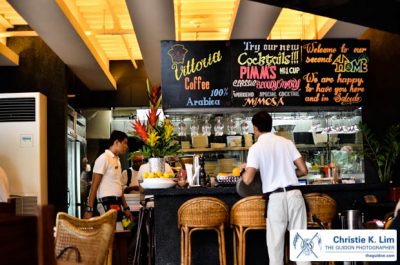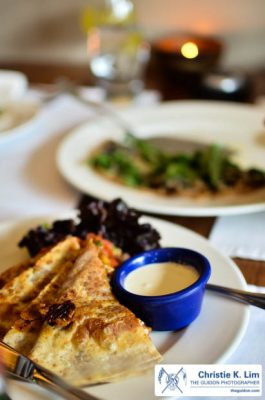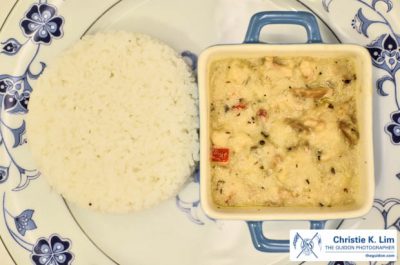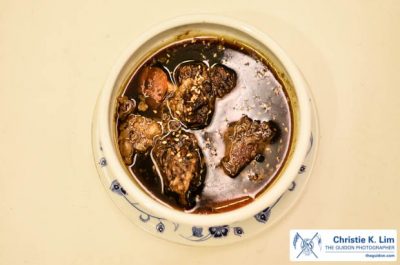When the going gets tough, the tough get going—home, that is, to the warmth of a home-cooked meal.
After a grueling day, nothing compares to that first bite. While some find joy in a pint of Ben & Jerry’s, others seek solace in a bowl of pancit canton. Whatever form it takes, comfort food is one of life’s simplest pleasures in times of turmoil.
Home is exactly where restaurants like Apartment 1B, Namnam, Recovery Food and Sunshine Kitchen draw their inspiration. By evoking happy memories with their food’s recognizable flavors, these restaurants are making a name for homegrown recipes in the commercial food scene.
Craving for nostalgia
For most Filipinos, dishes such as adobo and sinigang are classics when it comes to comfort food; no celebration is complete without them. But because every household has its own interpretation of the same dish, no other version can ever come close to the familiar flavors of home.
Marketed comfort food then comes down to a matter of branding: A way for restaurants to differentiate themselves by style of cooking.
“I remember reading once that what set the trend of comfort food was the advent of ‘fine dining’ comfort fare by chefs when the recent recession hit the US,” recounts Abba Napa (BS CTM ‘00), co-owner of Namnam, a newly opened Filipino comfort food restaurant.
The trend has since made its way over to the Philippines, where restaurants like Namnam and Malou Fores’ Recovery Food—an eatery open 24/7 for day diners and those looking to recuperate after a night of boozing—have been popping up all over the metro.
Namnam—which takes its name from the Filipino “malinamnam,” meaning “delicious”—serves Filipino favorites such as Sinigang na Baboy and House Crispy Sisig, fulfilling simple cravings when they strike.
However, comfort food doesn’t necessarily mean Filipino cuisine; Recovery Food focuses more on Asian dishes, with best sellers such as the Happy Beef Rice Bowl, a bowl of steaming white rice topped with succulent beef, and Rau Men, a bowl of ramen noodles served in mildly spicy peanut broth.
While these restaurants satisfy those who long for Filipino and Asian flavors, other eateries cater to food lovers of all sorts, proving that what is familiar and comforting to one might be completely alien to another.
“Everybody has their own memories or experiences which they want to be triggered by a certain dish, whether it’s because they want to remember their childhood or maybe just feel a certain way,” explains Chef Marivic Diaz-Lim, who opened gourmet comfort food restaurant Apartment 1B in 2006. Then a new mom who wanted to start working again while raising her son, she set her sights on a condominium space near her apartment in Salcedo Village: Unit 1B.
More than a decade after opening Tribeca, Diaz-Lim’s first restaurant, Apartment 1B was born out of her desire to cook the food she liked to cook. Instead of following complicated recipes and compromising with business partners, she now exercises full creative control over her menu: Every item is a favorite of hers, made of the same fresh ingredients she uses at home.
Comfort food confessions
“Some cuisines, such as the deeply flavorful mélange of foods from the Philippines, seem to resist assimilation into mainstream culture, thriving in home kitchens but stubbornly remaining there,” wrote Amy Scattergood of the Los Angeles Times. Written in 2010, Scattergood’s article examined why many Filipino chefs chose to keep the food they cooked at home away from their L.A. restaurant menus.
Today, however, Manila has a different story to tell. Here, more and more restaurateurs are blurring the lines between their private and professional kitchens. Because memories of home and comfort food are inextricably linked, it is natural that many comfort food menus are rooted in well-loved family recipes.
“Everything on my menu, basically, is things I’ve craved for or I’ve liked or cooked,” Diaz-Lim says. “My husband loves meat loaf; we both like fish and chips,” she adds, in reference to some Apartment 1B favorites.
Aside from time-tested family staples, personal food memories also play a big role in the development of the concepts and menus of comfort food restaurants. “When we were out studying [back in college] we’d have all-nighters in fast food joints and coffee shops, but we could only stay until 2:30 [am],” recalls Cas Sarmiento, owner of Midnight Owl Snack Café in Teachers’ Village.
Midnight Owl is everything her college self would have loved: Open from 4:30 pm to 4:30 am, the café is a bright, cozy place where students can eat and study comfortably all night long.
But true to their title, these restaurants offer comfort based on other people’s tastes and preferences, as well. For instance, Apartment 1B’s Turkey Burger started out as a request by one of Diaz-Lim’s regulars, an International School teacher from San Francisco. Soon, other expats in the area began looking for it too, convincing her to add it to the menu.
The business of comfort
Filipinos are notorious food-lovers. Many of our conversations begin with the quizzical “Kumain ka na ba (Have you eaten)?” to the enthusiastic “Kain na tayo (Let’s eat)!” and countless relationships are strengthened over the simple act of sharing a meal. With these strong cultural traditions in mind, local restaurateurs are on the lookout for more ways to create memorable food experiences for diners.
Diaz-Lim sees the popularity of comfort food as a huge sign of encouragement for amateur chefs hoping to enter the industry. One doesn’t need to have been trained in Italy to open a good restaurant. “[This trend] brings out the best in whoever has the passion for it,” she says.
Before she decided to open Midnight Owl, Sarmiento, for instance, was majoring in biology at the University of the Philippines Los Baños—a far cry from a professional restaurateur. “We wanted a place where people can study, or a quiet place to talk [where they can eat] the things we normally eat at home,” she says, explaining the concept behind her “study café.”
A few years ago, opening a comfort food restaurant entailed a leap of faith. Before Diaz-Lim left New York to come back to Manila, her friends teased her for wanting to go home to cook “simple food” like mango barbecue chicken. After spending four years studying at the Culinary Institute of America and working at the Mark Hotel on Manhattan’s Upper East Side, it seemed like a waste.
But what Diaz-Lim’s friends thought was a step down from fine dining is slowly being recognized as a path that chefs are open to exploring. “That’s what I want to cook,” she shrugs, expressing the same sentiments as restaurateurs who now feel more confident about sharing their personal food philosophies.
The search for home
Finding satisfying home-cooked meals isn’t as easy as it once was, and having to prepare food isn’t as relaxing as eating it. “We want to enjoy [comfort food] with other people without making it stressful for [our] household,” Diaz-Lim says.
For professionals who can’t slave over family dinners but still want a similar experience, eating out is the next best option. For students living away from home, familiar haunts like Midnight Owl are the closest they can get to their family dinner table. As Diaz-Lim explains, we turn to restaurants “to be able to enjoy simple food, but not at home—so [we] can have it more often.”
“As a young adult who lives on my own, finding comfort food close to those cooked by mom is a big challenge,” admits sophomore communications technology management major MJ Si. “It’s the experience of the food that makes it count.”
The longing to reclaim a sense of serenity in the midst of our busy lives is one many can relate to and something comfort food can satisfy. Whether it’s Chinese takeout or mom’s homemade tinola, our choice of comfort food can say a lot about us—how we grew up, what lifestyle we’ve chosen, which memories we hold dear—yet it can also remind us of the gratifying human experience of rediscovering the meaning of home.
















